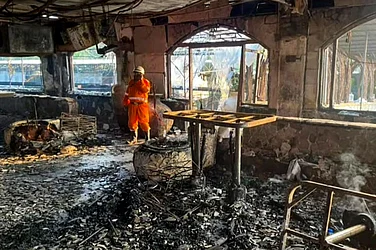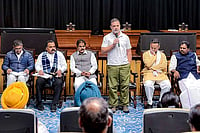In Calcutta, a beaming Mamata Banerjee was distributing chocolates as results came in from Delhi. In the national capital, an equally exultant AAP leader and Supreme Court lawyer, H.S. Phoolka, was tweeting, “Dilli hamaari hai, ab Punjab ki baari hai (Delhi is ours, Punjab’s next).”
In Bihar, JD(U)’s Nitish Kumar got back his voice as he mocked at the bjp’s discomfiture. The saffron party would bite the dust in Bihar too (where assembly polls are due later this year), he hoped. In Chandigarh, however, Punjab chief minister Parkash Singh Badal and his deputy, son Sukhbir Singh Badal, were dismissive. The AAP landslide, they felt, was confined to the national capital and would have little or no impact in Punjab.
Bihar (2015), West Bengal (’16) and Punjab (’17) are scheduled to elect new assemblies in the next three years (along with Assam, Kerala, UP and Tamil Nadu among others). But with AAP drawing a big support from Poorvanchalis (people from Bihar and eastern UP) in the capital and with all its four MPs in the Lok Sabha elected from Punjab, it can reasonably hope to do well in these states. Time may be a constraint in Bihar with an early election before the scheduled time of October-November appearing likely. But even a last-minute foray could affect the recently accomplished consolidation of anti-BJP elements. But in the other two states, the political situation appears ripe for a new party with a fresh outlook.
But then hasn’t AAP learnt lessons from 2014? Stretching itself too thin, it contested 470-odd seats for the Lok Sabha. As many as 468 of its candidates ended up forfeiting their security deposit. Chastened, the party decided not to contest the Haryana assembly polls later in the year although Kejriwal himself, as well as AAP stalwarts Manish Sisodia and Yogendra Yadav, hail from the state. Will the Delhi landslide again lead to a plan change?

Broom bhangra AAP supporters celebrate the Delhi victory in Amritsar, Feb 10. (Photograph by Prabhjot Singh Gill)
While AAP is the elephant in the room, there is no unanimity on its potential. The dominant view is that it can’t in any way replicate its success beyond Delhi, or at best that the idea of AAP can work only in metropolitan cities and smaller urban conglomerations. Of course, there’s also a minority view that AAP is an idea whose time has come; that it’s only a matter of time before it spreads like wildfire and engulfs the country.
Much will clearly depend on how the AAP government fares in Delhi. Its ability to live up to its own ideals, deliver on its promises and keep both idealism and optimism alive will decide if the party can make inroads into the hinterland. That said, the three most fertile grounds for it to leave its footprints are the ones mentioned above: Bihar, Punjab and Bengal.
Will Bihar embrace AAP?: While AAP is reminiscent of the JP movement in the mid-’70s when Jayaprakash Narayan called upon students to give up their studies for a year and help usher in ‘Total Revolution’, the state since then has witnessed a surge of identity politics along caste lines. Also, Bihar may rank at the bottom on socio-economic indices but such is the love for politics here that it’s produced a disproportionately large number of dailies and TV news channels. With no mainstream party being a paragon of virtue in public life, a new outfit challenging the established order may appeal to the people. The related fear is about a split in the secular vote, helping the BJP.
An advantage for AAP is the support it already enjoys in the capital among students, teachers and youth from Bihar. Both Delhi University and Jawaharlal Nehru University (JNU) have large numbers from the state and it came as no surprise to find the Facebook page of AAP’s Bihar unit had a photograph of its ‘Bihar volunteers’ at JNU. What is not clear is how it will impact the established parties if AAP does decide to put up candidates. Would it be satisfied with testing the waters by fielding a handful of candidates or will it go the whole hog, contest all 244 seats?
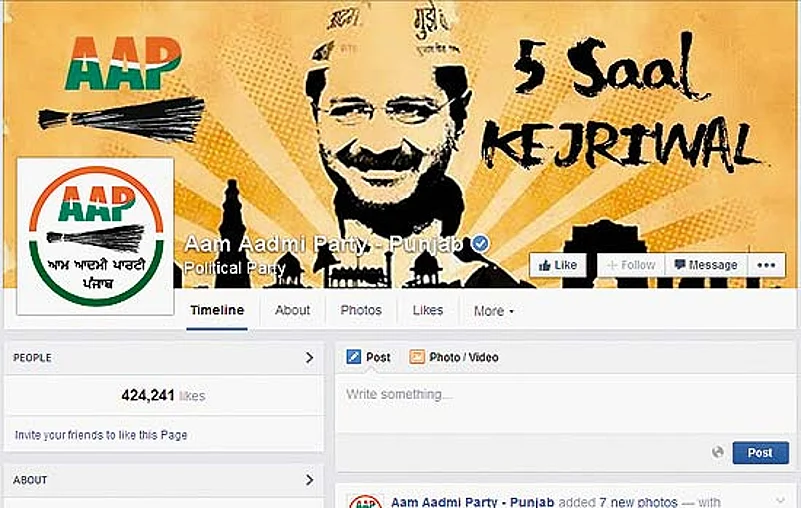
With Jitan Ram Manjhi playing the ‘Mahadalit card’ and expected widely to join hands with Ram Vilas Paswan if he fails to prove his majority, new social and political equations are forming rapidly in the state. Neither the JD(U)-Congress-RJD-Left combine nor the NDA will be comfortable with AAP muddying the situation further. On the other hand, AAP supporters will be hoping the party makes a splash in the volatile state.
Challenge for SAD: A political joke doing the rounds in Punjab for the past decade or so has the two top leaders of SAD and Congress in a boat that sinks. The question was who, if any, should be the survivor. The answer was none, that it would be Punjab which would be saved.
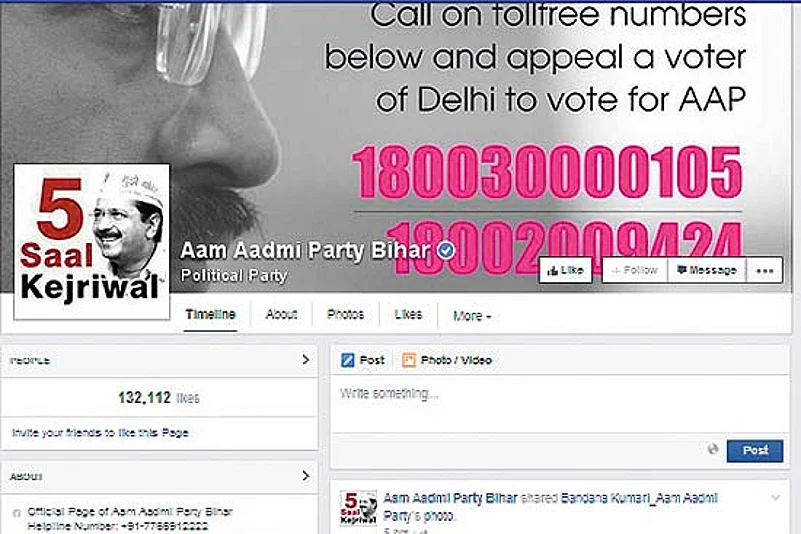
So disillusioned are people with the mainstream parties that it came as little surprise when as many as four AAP candidates won Lok Sabha seats from Punjab last year. Among the stalwarts who bit the dust were Perneet Kaur of the Congress in Patiala and SAD strongman Sukhdev Singh Dhindsa in Sangrur.
An even more telling fact is that SAD lost all four seats it contested in Delhi in alliance with the BJP. It even lost the Rajouri Garden seat, where it contested on its own symbol. Manjinder S. Sirsa lost here to AAP’s Jarnail Singh, the journalist who hogged headlines by hurling a shoe at then finance minister P. Chidambaram; and this despite Sukhbir Badal campaigning for him.
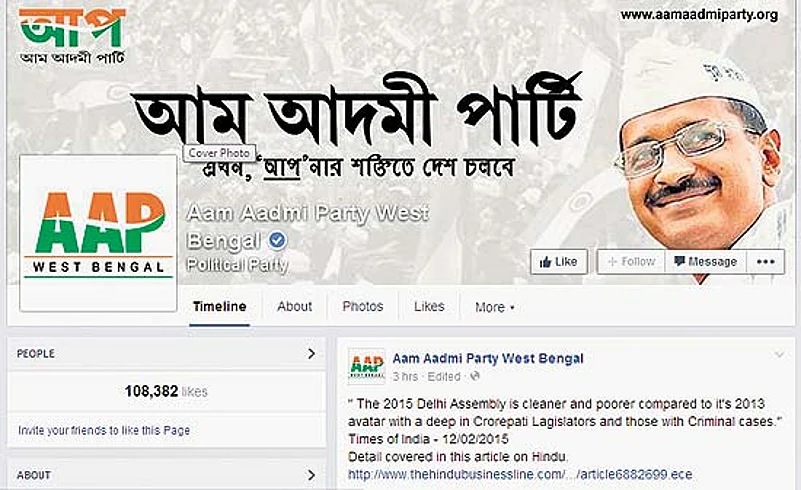
AAP may have lost an opportunity by not contesting the municipal polls in Punjab this year. Its volunteers there, led by Gul Panag and Bhagwant Mann, had moved to Delhi for the campaign and the leadership felt it was not ready to take on SAD just yet. The situation may well be different by 2017.
AAP? Baap re baap!: Exclaimed Mamata Banerjee two years ago when a news reporter drew a parallel between her and the “equally austere” Kejriwal. Since then, Didi has been pushed on the backfoot and a resurgent BJP has been at her with the war cry, “Bhaag, Mamata, bhaag.” With an important minister, Madan Mitra, arrested by the CBI in the Saradha scam, and another, Mukul Roy, being interrogated along with several other leaders from her TMC, the Bengal CM has been having a torrid time of it.
The byelections for the Bongaon LS and Krishnaganj assembly seats this week are a litmus test, the BJP has been steadily drawing celebrities into its fold, not to mention the hordes of ex-CPI(M) supporters and workers in the countryside switching sides. Recently, even a TMC minister, Manjul Krishna Thakur, resigned to join the BJP. So there’s every reason to believe the saffron party is on the upswing. While AAP has a token presence in the state and its unit has a Facebook page, it neither has a structure nor leaders, leave alone workers. It seems unlikely that it will get involved in a misadventure in the state just yet.













